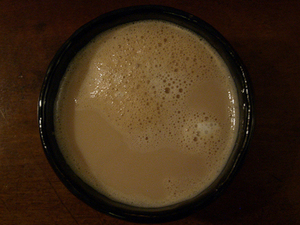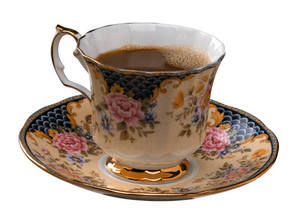Masala chai is the proper name for a spiced tea drink from India that has become very popular in the West in recent years. Chai simply means tea in Hindi, and masala refers to a blend of spices. Chai is a caffeinated tea beverage, made with milk and usually sweetened with honey. The spices that give chai its taste also impart health benefits that can warm us in the cold of winter, help us to relax after a stressful day, and balance the energies of body, mind and spirit.
Traditional Chai Ingredients
Chai consists of several main components: 1) tea; 2) milk; 3) chai masala, or tea spices; and 4) a sweetener such as honey. The tea used to make chai is traditionally a full bodied black tea such as Ceylon, Assam or English Breakfast; a similar tea from Kashmir, called kahwah, is made from green tea instead. Some chai recipes simply add milk to the steeped tea, but some recipes call for the tea and spices to be simmered or steeped in the milk. Use whole milk or half and half for a rich cup of chai, or substitute soy or almond milk for a vegan chai. If you make a latte style chai, skim work will produce the best foam.
It is possible to buy chai tea bags with the spices already added, or even to get a liquid concentrate from which to make chai. Of course, it can be a wonderful adventure to make chai yourself! This allows you to create a unique spice blend that suits your tastes perfectly, or even to adjust the spices to address specific health concerns. Once you have found a blend you like, consider making a chai honey that allows you to make a quick cup of tea whenever you want it. The honey would make a lovely stocking stuffer or hostess gift, alongside a box of good quality black or green tea.
Health Benefits of Chai
While tea itself is associated with a number of health benefits, whether it be black, green or white tea, the spices used in a classic chai recipe also contribute to the healthful properties of this beverage. In Ayurvedic medicine the main ingredients in chai are “sattvic” – that is they are revitalizing, but at the same time they help to clear the mind and calm the spirit. Many of the key ingredients impart a warmth to the tea, and are used both in eastern and western herbal medicine to aid the digestion, breathing and circulation of the blood. The antimicrobial qualities of some of the spices come in handy during cold and flu season, or whenever we happen to be fighting off a sore throat or cough.
Cardamom: Cardamom is generally considered to be the dominant spice in chai masala. It is reputed to elevate the mood, and to be beneficial to the heart, lung and kidneys. Some recipes call for the ground spice, but the more authentic ones use the green pods. Open these slightly, to allow the warmth of the cardamom to be extracted. If you take the time to warm the cardamom in a hot skillet before making your chai, this will produce the best results.
Cinnamon: Cinnamon is reputed to promote respiration and circulation, and to increase energy and alertness. It is thought to bring out the health benefits of other ingredients in the tea. Cinnamon sticks should be used for making chai. Break them into small pieces and allow them to simmer gently in the milk or water.
Cloves: Long known for their pain relieving and germ killing properties, cloves were also used to make a tea for relieving morning sickness. Like cinnamon, ginger and pepper, clove can help increase health benefits of other herbs and spices. Use whole cloves for chai, and simmer them with the cinnamon sticks.
Ginger: Ginger offers a large number of health benefits, particularly to the digestion, respiratory system and circulation. It is energizing and boosts the immune system. It also has antimicrobial properties. Use fresh ginger root for chai whenever possible. It can be cut into small bits or grated. Add when the tea is steeping.
White Peppercorns: Opt for white pepper when making chai. This is simply the inner part of the peppercorn, with the outer black skin of the fruit removed. Pepper has a warming and energizing effect. It promotes circulation and helps to regulate metabolism. It boosts the health benefits of other ingredients in your chai. Peppercorns should be coarsely ground before they are steeped in the tea.
Optional Chai Ingredients
A number of other spices and herbs can be added to chai to produce different tastes. Some of the additional ingredients include vanilla bean, allspice berries, nutmeg or mace, coriander seed, poppy seed, saffron and even cocoa.
Fennel seed is a common addition to chai masala. Fennel has a taste like black licorice, and helps to settle the stomach after a meal. The seeds are small and should be added after the tea has simmered. Licorice root, anise seed or star anise are sometimes used instead of the fennel. Any of these spices have a strong taste that can easily overpower the chai; use in small quantities.
Sources:
Chai tea health benefits.” Healthy Coffee Substitute
“Kashmiri kahwah tea.” Tea Escapade
Candi Yoder, “Masala chai.” Culinary Teas
Mahesh, “Two ways to make Indian tea.” Chai Recipes






